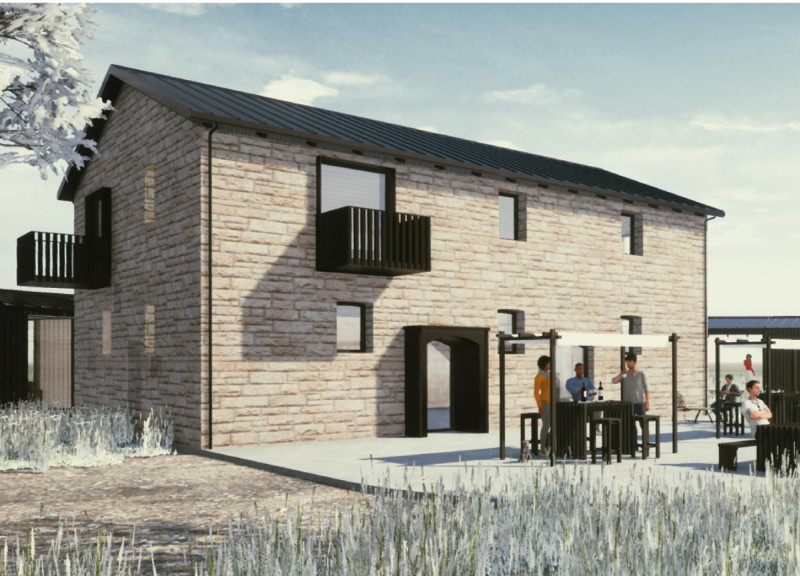5 key facts about this project
*L'Acino* is a project designed to promote social interaction and the appreciation of wine culture in a unique setting. Located in an area where community engagement is a focal point, the design consists of five guest houses arranged in a circular layout around an existing center building. This format removes barriers between private and public spaces, creating an inviting atmosphere where occupants and visitors can engage with one another while experiencing the local wine production and heritage.
Architectural Concept
The circular arrangement of *L'Acino* enhances connections between the guest houses and the central structure. Each guest house contains six micro-modular spaces, which encompass functional areas such as a living room, bathroom, dining area, and bedroom. This thoughtful organization emphasizes practicality and adaptability, allowing guests to adjust their accommodations based on personal preferences.
Terrace Integration
Extending from each guest house, terraces play a key role in fostering community. These outdoor spaces provide areas for gathering, encouraging conversation and interaction among guests. They effectively bridge the indoor living spaces with the surrounding landscape, promoting a sense of connection while maintaining a level of privacy for each guest house.
Historical Context
A significant aspect of *L'Acino* is the preservation of the existing building, which represents the local heritage and philosophy. Incorporating historical elements into the design creates a contrast with the modern guest houses while celebrating the region's culture. This blend of old and new invites guests to appreciate the richness of the area’s history in combination with contemporary comforts.
Spatial Harmony
*L'Acino* achieves a careful balance between private and communal areas, reflecting its core principle of connection. The layout allows for easy interaction among guests while providing personal space when needed. This design encourages individuals to engage with both the architecture and the surrounding environment, resulting in an enriching experience that aligns with the principles of wine culture and community living.





















































